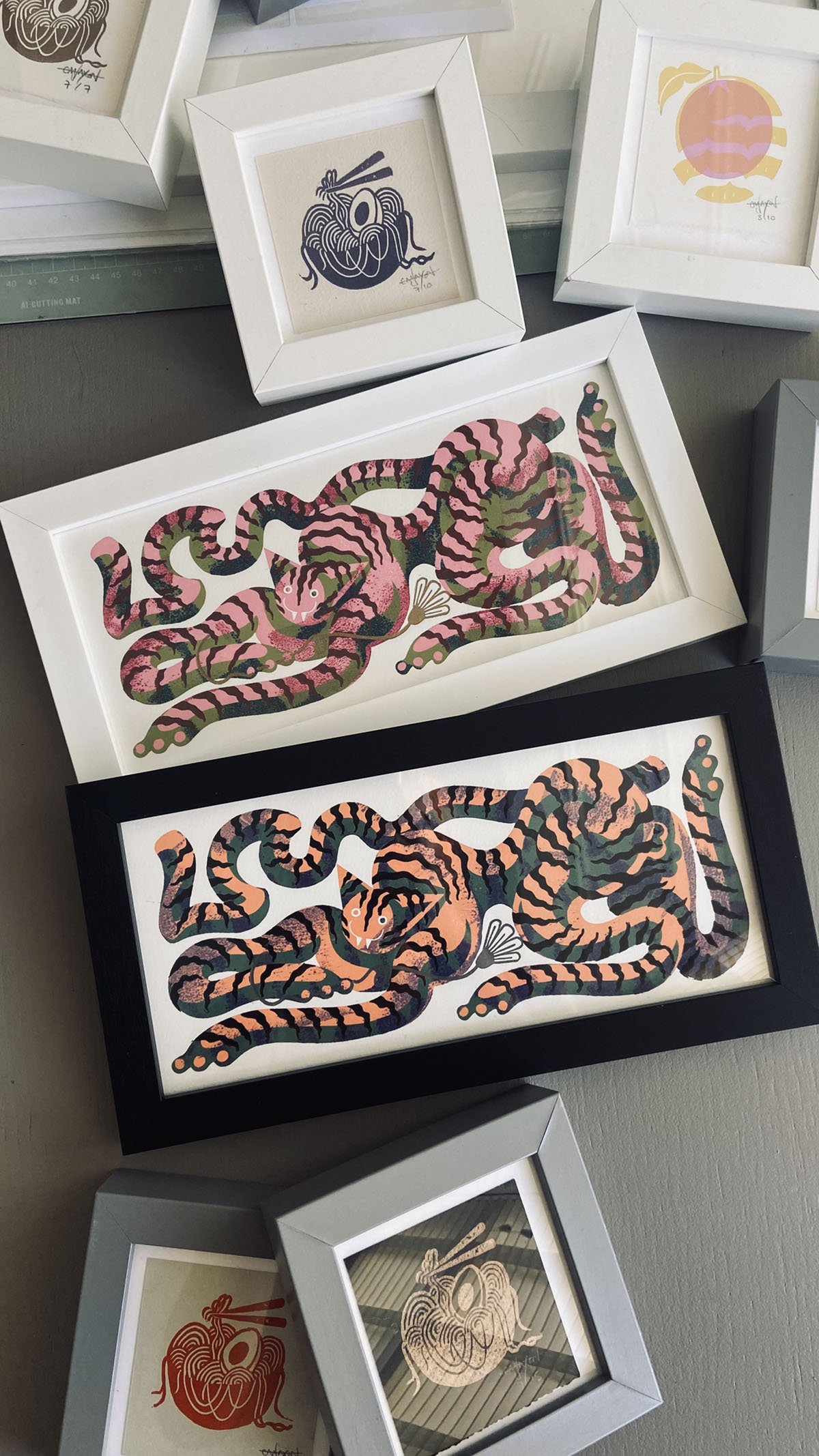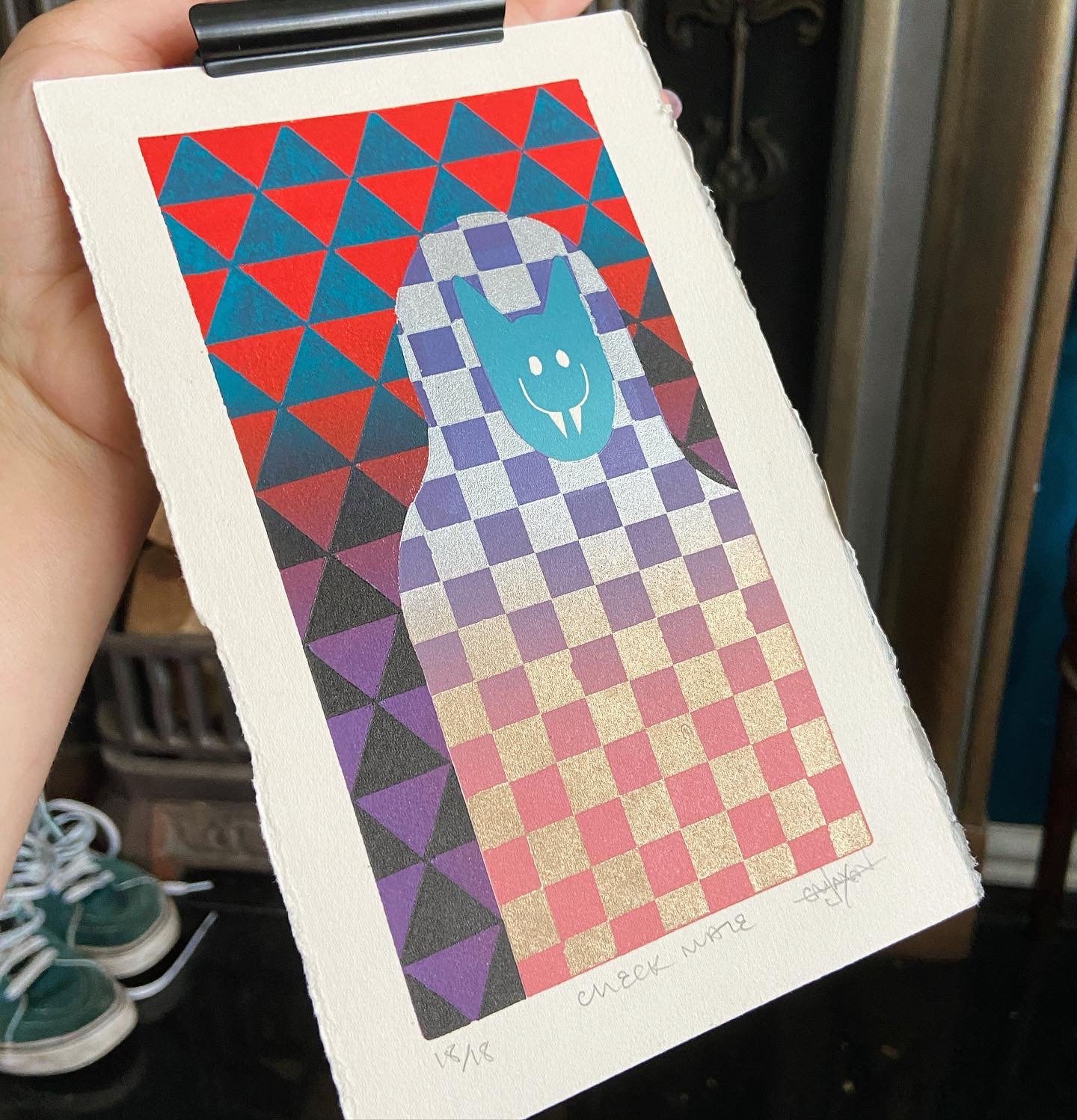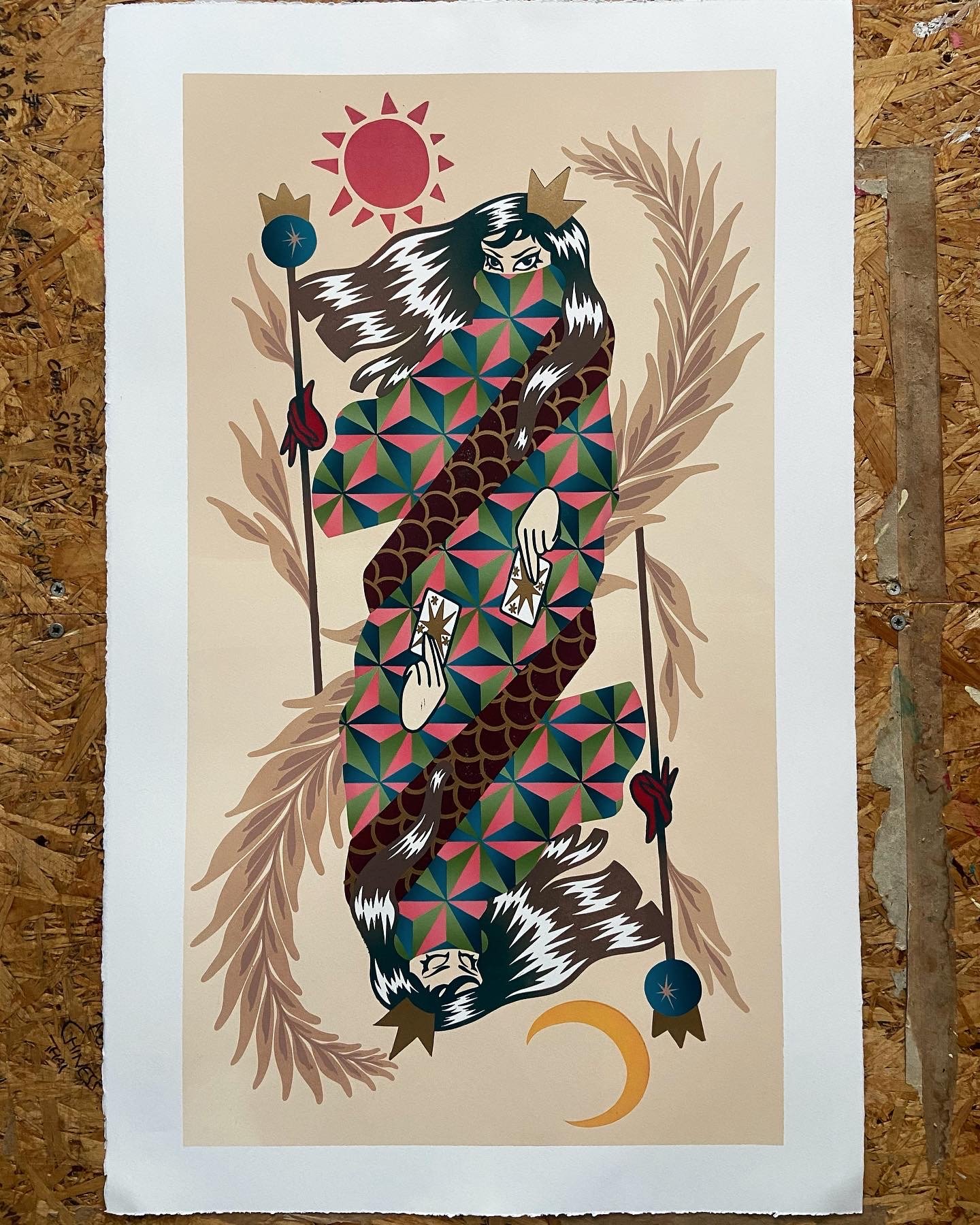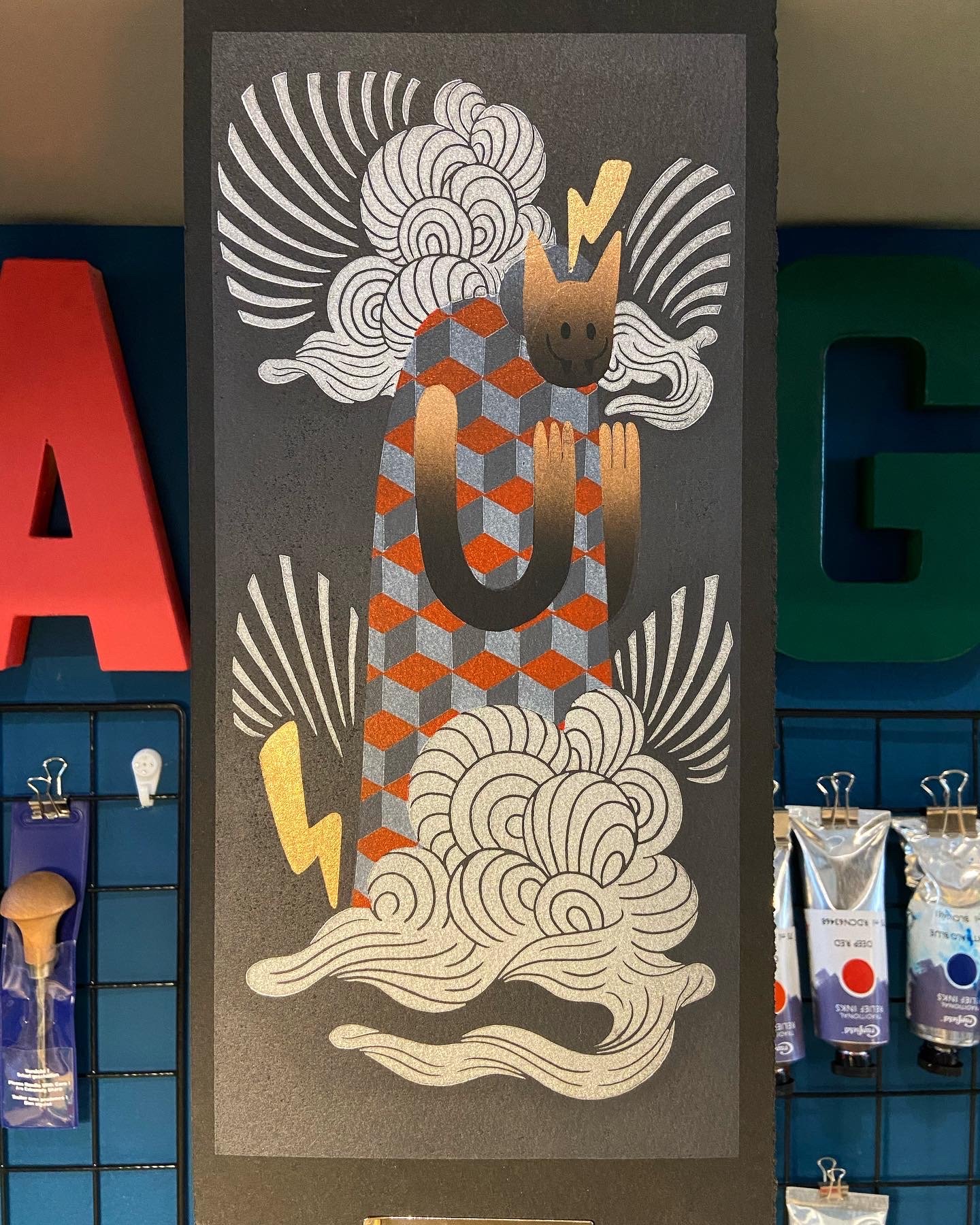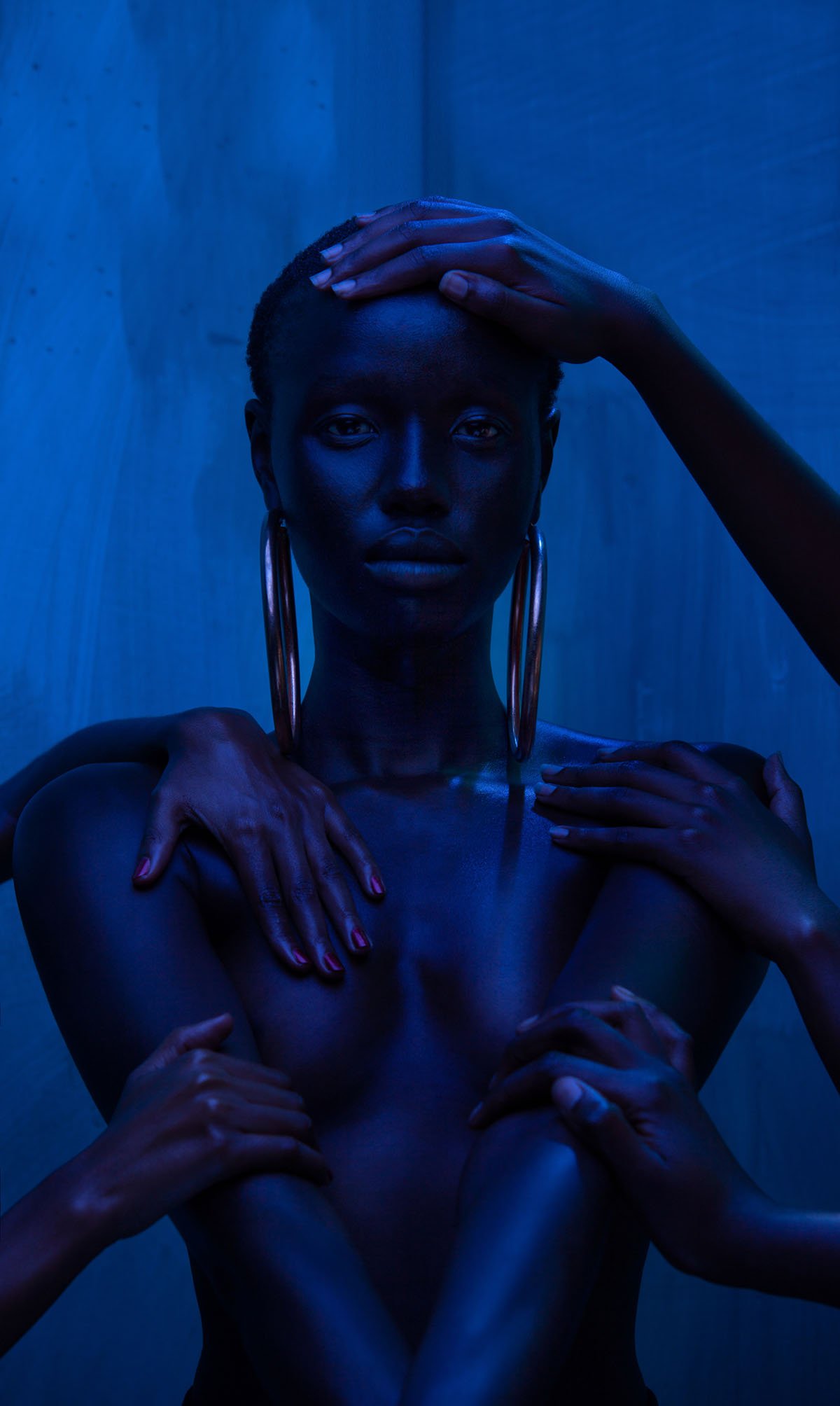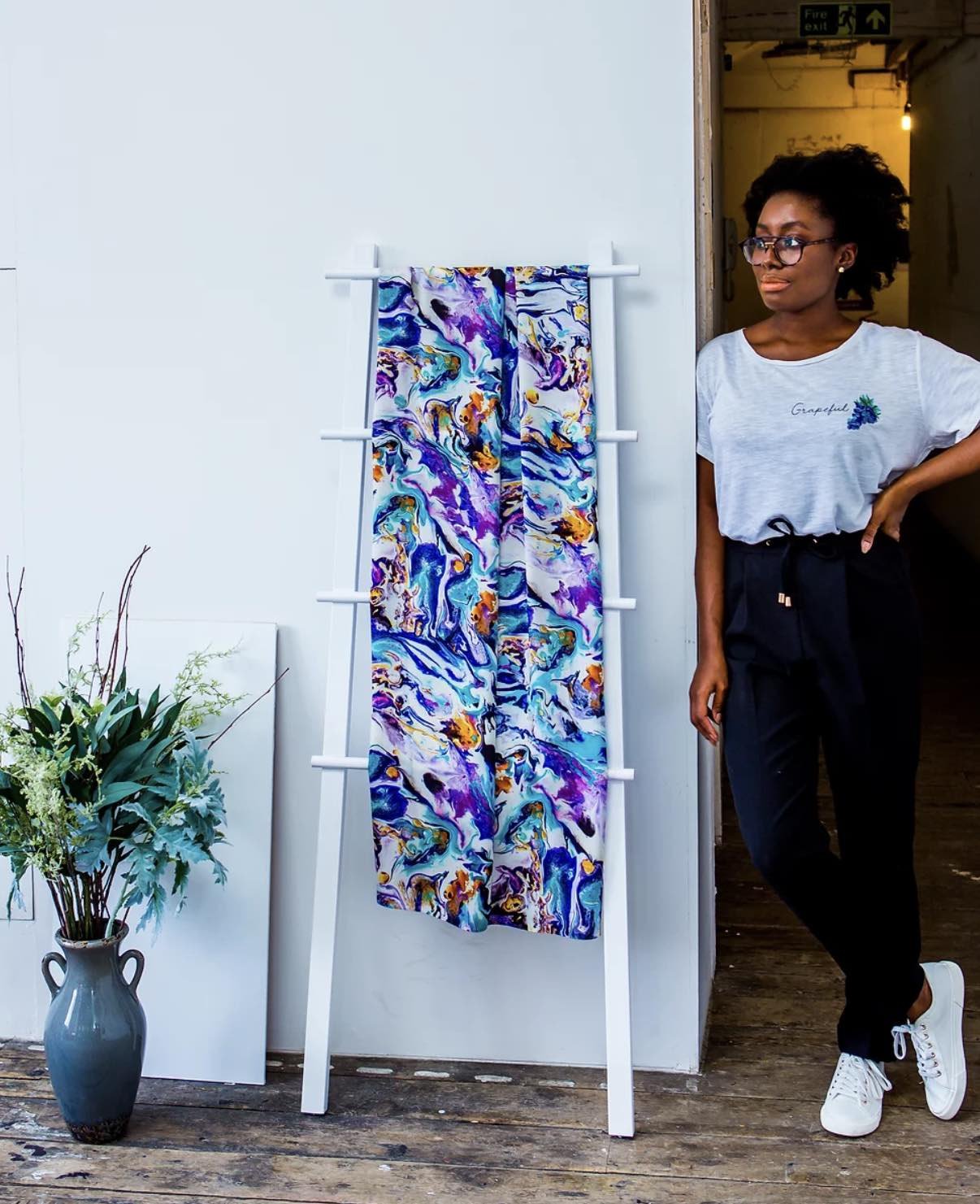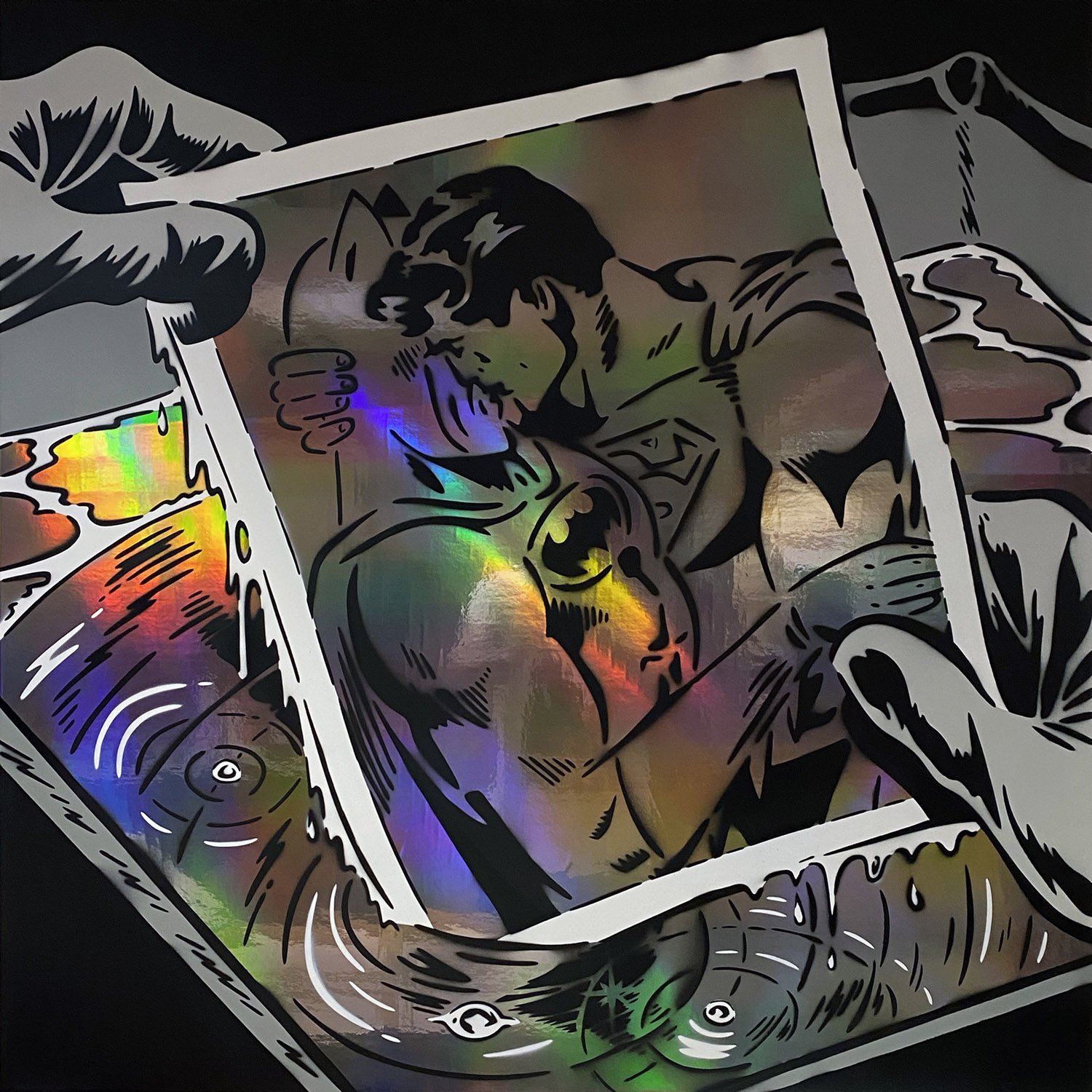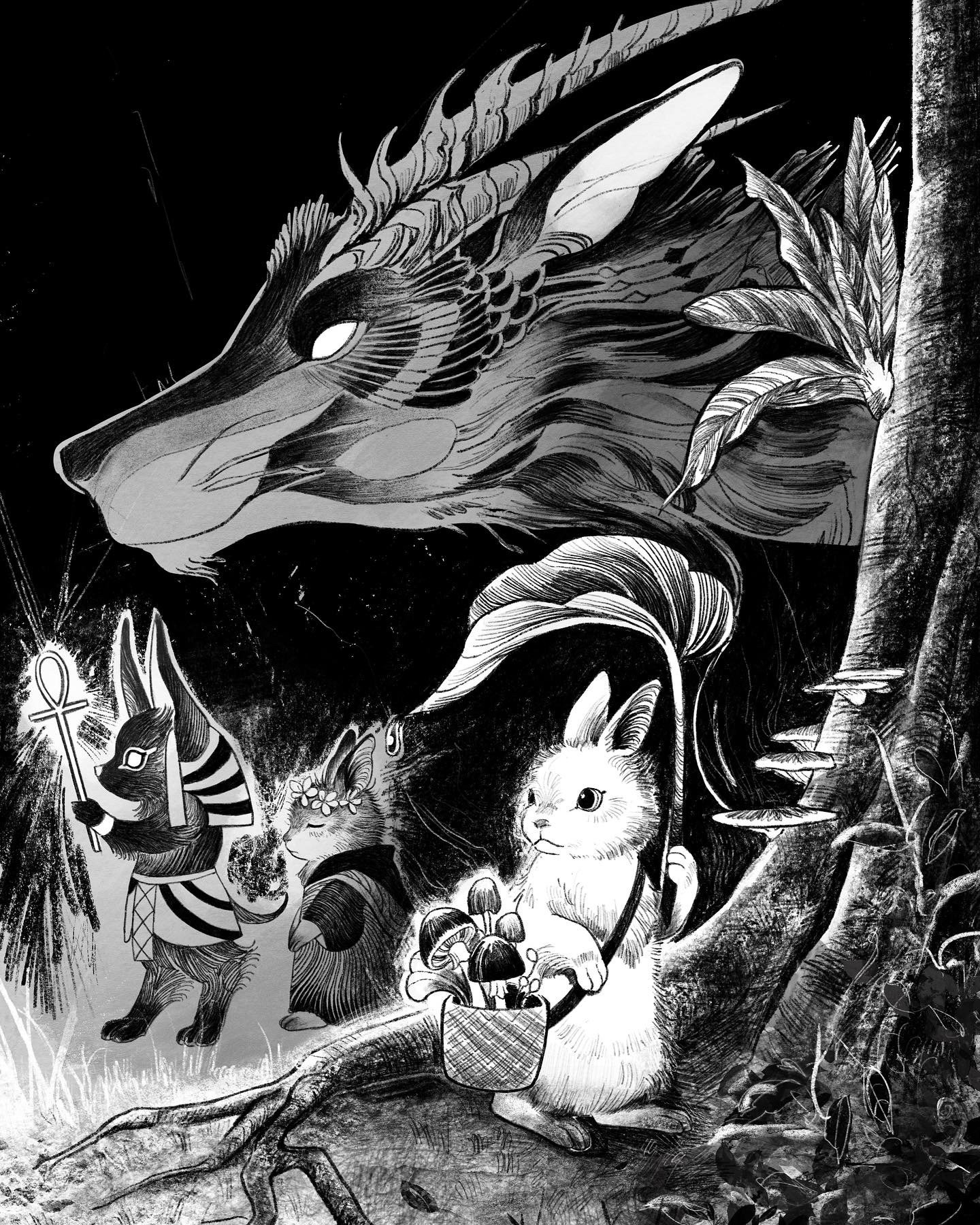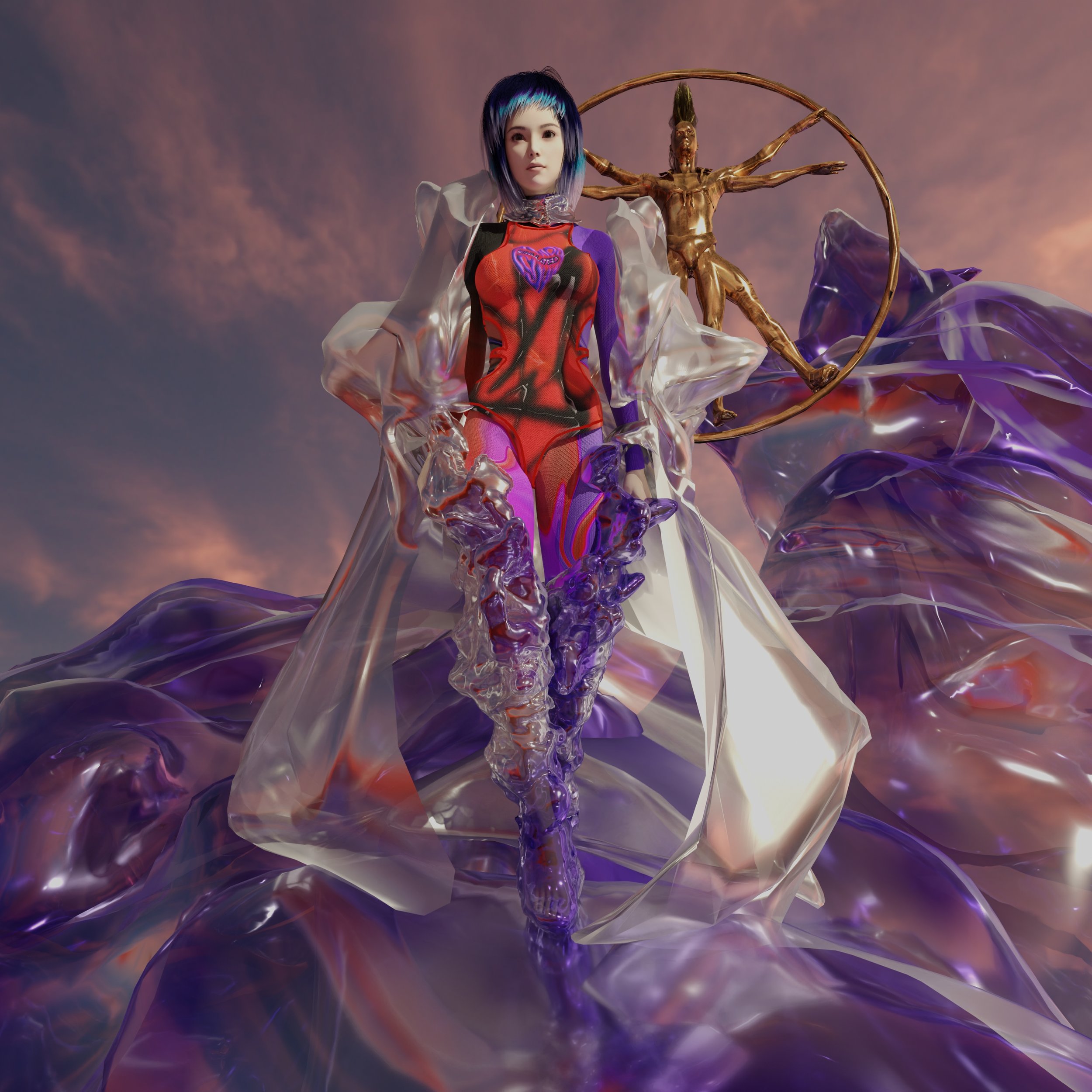Art as a process of self-discovery: In interview with Lanabagu
About
Lanabagu is a printmaker and tattoo artist based in the Northeast of England, who uses her art as form of self-discovery. Find out more about the creative process behind her charming ‘wobbly and whimsical’ work, as well as her future ambitions.
Share this article
tell us more about yourself, your story and vision as an illustrator.
I’m Em, I go by ‘Lanabagu’ because it’s a mashup of my pets’ names and they’re the reason for everything I do. It wasn’t until I was responsible for a large dog that I kicked myself into shape and started treating my art as a job. It was my only option; a regular job would mean I was away from him for too many hours, and working fewer hours I wouldn’t afford him.
Creatively, this is a really tricky question for me because my vision is something I’ve never been sure of, or I’ve always tried to recognise. But it wasn’t until I’d created a substantial body of work and looked back over what I’d made that I was able to see it. And I mean, I had to look back over 7 years worth of sketchbooks and final products to go ‘aaaah, that’s what I do.’
But I think to summarise it loosely, my goal is ‘to make what I want’. Some recurring themes in my work would be, wobbly extremities, clean curvy lines contrasted with sharp angles, bold shapes and colours, whimsical character designs, and subtle hand-made textures. I have a real love of animals and simple design with an eerie or a subtle emotional sub-context, so I think that’s my vision.
What do you hope to convey and express through your art?
Again this is something I’m not entirely sure how to answer, I don’t think I’m necessarily trying to convey anything.
I make what I make and then when I look back I can see a deeper meaning than I set out to. Rather than putting a meaning into my work I like to deduce a meaning from my own creative outpours; by making art I learn more about myself with every piece. I think for the most part people will buy my work because it looks nice, but when people sense something emotional in it that leads them to want it, I truly appreciate those moments. Especially when I get to have these conversations with people at events.
“Rather than putting a meaning into my work I like to deduce a meaning from my own creative outpours; by making art I learn more about myself with every piece.”
Your art involves relief printing and silk screen printing – how would you describe your most liberating and creative process to us?
It does! Silkscreen printing was my first love, I studied Illustration at Leeds Arts University and throughout my first year and half of my second year, I found myself disinterested in the things I was making. I would honestly say screen printing changed my life, I would struggle to get out of bed before I discovered it, and then I would have to be up at the crack of dawn to get my favourite of the 4 vacuum beds before anyone else got there.
Once I graduated I spent a couple of years doing a lot of nothing, mundane jobs or small creative side ventures. It wasn’t until Covid hit and I had a load of time again, I dug out an old piece of lino and my tools and made my first lino print in years. I wasn’t interested so much in the carved out mark making that lino can offer, I wanted to recreate a screen printed aesthetic without the need for the facilities and equipment that screen printing can require.
With this in mind, there was a process I enjoyed when screen printing that was called ‘marbling’. I’m not sure if that’s the correct term, but I wanted to recreate this process using lino. So I think my most liberating and creative process, from start to finish, would be when I come up with a little sketchy doodle that doesn’t require too much refinement, I immediately know how to execute it with lino (because sometimes it can be tricky to wrap my head around), and I get to use bold colours and marbling in a multilayered print and watch it gradually come to life. My most recent prints ‘Swamp Tiger’ and ‘Ruby Mew’ are perfect examples of that.
“I think my most liberating and creative process, from start to finish, would be when I come up with a little sketchy doodle that doesn’t require too much refinement.”
In an increasingly digital world, what is the value of traditional mediums? How do you balance traditional and digital mediums to keep ahead of the curve?
Buying an iPad was incredibly formative step for my practice, I bought it around the time I fell in love with screen printing, and I mostly used it to create complex colour palettes from a small number of colours through overlays and transparencies. I’ve never fully committed myself to learning how to create strong digital art; but my iPad is mostly used for creating tattoo designs, as it speeds up the stencil making process.
When designing prints I tend to start working in a sketchbook, I get my basic design down in pencil, and then I’ll photograph my sketch and blow it up on my iPad to whatever size I need it to be, then trace it back onto my lino block. So the only digital step is really the change in size. I think an important part of making art for me personally, is that hand-made element. I could probably create the same pieces digitally, but that takes away all of the unique elements each handmade print has, the way the texture is never the same twice when I marble. I like that each piece I create and sell was made by me, from start to finish, with no real digital intervention.
Your pieces have also been translated into tattoo art, murals and skateboard designs – how important is versatility to you as an artist and how do you see your art practice evolving in future?
Until I started lino printing a couple of years ago, I felt there was very little continuity in the work I was making, or that my tone of voice wasn’t obvious. I’ve always designed for an array of purposes, but making it ‘good’ or making it feel like ‘me’ was the hard part. So I think the versatility came first and the making good work came second. I studied Fine Art at college, Illustration as a degree, and I’ve always designed tattoos alongside this, so perhaps that’s where it came from.
Versatility is useful because it means I’ll often be asked to work on a project that’s out of my comfort zone but achievable, and I think constantly challenging yourself could be more important than aiming to be versatile. All I really want to make are lino prints and tattoos, whether the prints are on paper, tee shirts, tote bags, or skateboards. If these can then be translated into another format, then I’m usually happy to do it!
Would you say your cultural surroundings influence your art and approach to creating it?
I would say it has although again it’s not something I realised until I looked back at my journey. I grew up in Lanzarote and was there til around the age of 13. There was a notable artist from the island called César Manrique, who had a lot of influence over the natural landscape, and who’s sculptures were often the centrepiece of roundabouts or his designs on T-shirts widely available as souvenirs. It was the end of summer before I was supposed to start writing my dissertation and I was back in Lanzarote; at the time I was obsessed with drawing nudes and explicit imagery. I didn’t have my dissertation question yet, but while I was there we visited the artists home and studio, which is now a tourist attraction. I found the walls full of explicit drawings and Manrique had a tendency to create quite abstract works. I soon realised how I adored the abstraction of nudes and wrote my dissertation on this, noting some incredible Spanish artists who’s work reflected the same theme, such as Joan Miró and Picasso among others.
Once I moved back to England I found myself drawn to skateboarding and alternative music, and so graffiti, street art, and street fashion naturally became an interest alongside these. It’s only through studying Fine Art that I was able to explore a wide range of creative processes that were less similar to my interests, which I’m incredibly grateful for, as it meant once I learned all of these more classical processes, I could hone them back in and break them down to reflect the type of work I wanted to make and the tone of voice I want to put into the world.
“Once I moved back to England I found myself drawn to skateboarding and alternative music, and so graffiti, street art, and street fashion naturally became an interest alongside these.”
Who would your dream artistic collaboration be with and why?
If I had to pick someone, I’d probably say Pablo I Prada. His process is so far away from mine and that’s my favourite part of collaboration pieces, when you can see both artists’ tone of voice in one piece. My flat clean shapes and his painterly aggressive marks.
I know from collaborations in the past that if I don’t feel like I can make something the way I want to, I probably won’t give it everything I’ve got. Ideally, a collaboration for me would be, I make something, and then the other person does to it whatever they want to it. I suppose a good example would be the way my boyfriend has recently created a 3D rendering of my ‘The Weatherman’ print. It’s a collaborative effort to an extent, but one where we don’t have to argue over the direction of the final product!
If you had one word of wisdom to share with the world, what would it be?
PLAY! ✺
Find Lana online
www.lanabagu.com
@lanabagu

